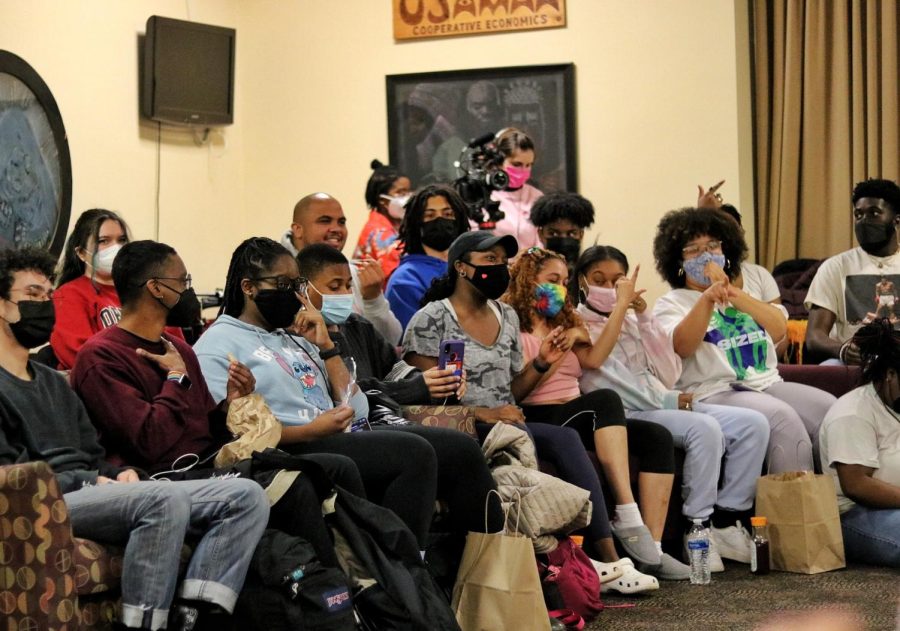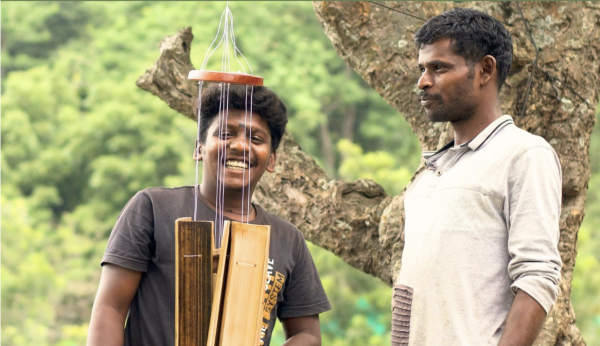Soul Session Celebrates Oberlin’s Black Community
Soul Sessions, a monthly event hosted by Afrikan Heritage House, fosters community and showcases Black performers.
On March 11, Afrikan Heritage House hosted Soul Session Allstars: The Alumni Edition as a continued celebration of Black History Month. For the past few years, Black History Month programming at Oberlin College and Conservatory hasn’t extended beyond the month of February, but this year, events have been organized running up through the end of March. A plethora of events have already been hosted around campus, from lectures to fashion shows, all in an effort to highlight and celebrate Black voices and the Black community at Oberlin.
Soul Sessions in particular is a monthly event hosted by Afrikan Heritage House that seeks to foster community and showcase Black talent. In a typical session, students and faculty members are free to perform songs and poems, freely expressing their creativity in an open, welcoming environment. This month’s Soul Session was unique and included an alumni host, DaQuan Williams, OC ’20. College third-year Jillian Sanford, a residential assistant of Afrikan Heritage House, explained that the addition of Williams’ voice was very important, especially as the community attempts to revitalize the popularity of the event’s popularity after the COVID-19 shutdown.
“Bringing him back, the hope was to engage newer students with the House and explain to them what the history of Soul Session is and why it’s important to us,” Sanford said.
The return of Soul Session is not a responsibility that Williams took lightly. During his time at Oberlin as an RA of Afrikan Heritage House, Williams saw the organization of Soul Sessions as one of his primary duties.
“Usually that’s a part of the job description — to bring folks together as often as you can — and Soul Session is the best way to do that, especially given how Oberlin works,” said Williams. “There’s always something happening in terms of events and things like that, so Soul Sessions are a good way for the Black community to just come together, have a moment to express ourselves, and be in community with one another.”
For Williams, another important aspect of the event is inviting all Obies into the space to share in the experience, and he feels that it is immensely important for non-Black students to take the opportunity to listen and appreciate Black voices.
“We encourage you to engage with us in this way because this is what we’re doing for us, this is what’s keeping us happy and sane and going on this campus,” he said. “It really does mean a lot when students show up, but it also means so much more when you take the time to engage with us to learn about our culture and learn about the things that we want to see non-Black people at Oberlin continue to do.”
It is this commitment and appreciation for the tradition of Soul Session that Afrikan Heritage House Director and Faculty in Residence Candice Raynor says made Williams the obvious host of this year’s Black History Month session.
“I definitely chose him for a reason,” said Raynor.
Williams wanted to center this Soul Session around three themes: love, joy, and peace; beginning with a meditation seemed like the best way to get in touch with those themes. This was something that Raynor found particularly powerful.
“[We’re] seeing an uptick in students in crises this year,” she said. “And then for third- and fourth-year students who were here over the summer, they’re on semester four in a row, so DaQuan felt like it was something he wanted to do. … I thought it was different and a nice way to start out with a calming breath to get everyone in a nice, calm space to just breathe for a minute.”
Of course, the main event of a Soul Session is the performances. From musical performances to spoken word, Soul Session provides a space for students to express themselves. However, Raynor explained how this form of community-building and artistic expression is more than just entertainment.
“It’s therapeutic in a lot of ways for students who are going through stuff that they’re not really speaking about publicly to hear from someone in their community that, ‘Hey, I’m going through this also, I’ve gone through it and I’ve come out the other side,’” she said. “I think that can be encouraging, so I think it’s a very therapeutic space.”
Perhaps the best example of the connections built in this space is the tradition of audience members throwing a shoe when a particular performance speaks to them. The sole of the shoe symbolizes the soul of the thrower. To Williams, this tradition symbolizes what Soul Session is all about.
“I like to call them offerings,” Williams said. “When someone is getting up to perform, it’s a very vulnerable space that they’re in. It’s a time where all your walls have to come down, and you have to be present, and when you’re singing into the abyss, you don’t have that feedback, that call and response from the audience, but the offerings are there to just reestablish that trust between the audience and the performer.”
In terms of revitalizing the Soul Sessions after COVID-19, Sanford feels optimistic about the impact of Friday’s event.
“At the end of Soul Session, we were all very proud of how it went,” she said. “We had a great turnout — younger students, older students, a wide variety of people, a lot of talent that happened … the energy was really, really good.”
Williams hopes to see a rise in turnout to Soul Sessions, and offers a message to students who may take up the torch in leading the events.
“I want to see more students who have the ability to host Soul Session, and things like that in the Black community, take on that leadership position, because it’s a great way to explore different talents,” Williams said.
As on-campus activities begin to reemerge, Sanford is looking forward to the future of Soul Sessions.
“While last year we were really struggling with COVID and were trying to find community and build community, this year we’re really trying to continue to build on that and continue to bring back traditions that have been lost,” Sanford said. “Soul Session is not a new thing, it’s a long-standing tradition, and it’s really one of our main events that helps build community and helps showcase different Black art forms at Oberlin.”











